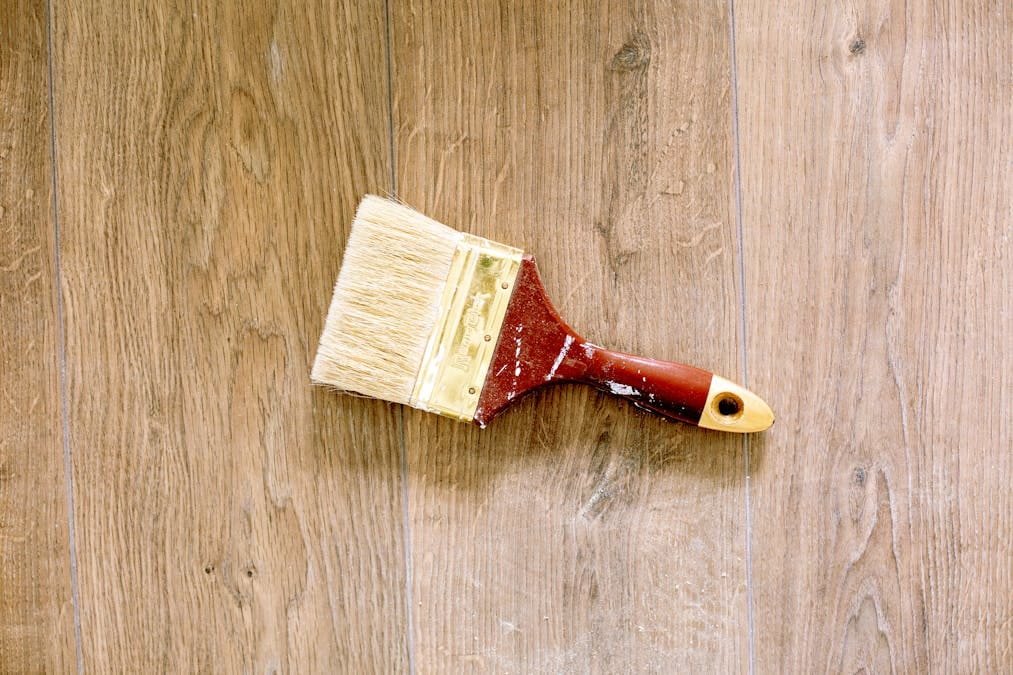How Often Should You Repaint Interior Walls?

When your home starts to feel a little dull, sometimes all it takes is a fresh coat of paint to bring it back to life. But how do you know if it’s really time to repaint — or if your current paint still has a few good years left?
Interior paint doesn’t last forever. It fades, scuffs, and wears down over time, especially in busy households. If you’ve been asking yourself how often should interior walls be repainted in a home, the answer depends on where the paint is, how the space is used, and the quality of the last job.
In this guide, we’ll walk through typical repainting timelines for different rooms, what affects paint durability, and how to tell when it’s time to call in the pros for a refresh.
General Guidelines by Room Type
Not every room in your home sees the same amount of activity, and that makes a big difference when it comes to how often you’ll need to repaint. Some walls can go years without much wear, while others start looking rough within a few seasons.
Here’s a general guide to how often interior walls should be repainted in a home, broken down by room:
- Living Rooms & Bedrooms: Every 5–7 years
These areas tend to see moderate use, and if you use high-quality paint in a durable finish, the walls can stay fresh for a long time. Bedrooms used by adults may even last longer if cared for. - Kitchens & Bathrooms: Every 3–4 years
Humidity, grease, steam, and constant cleaning wear down paint faster in these spaces. A good satin or semi-gloss finish can extend the life, but plan for more frequent touch-ups or repaints. - Hallways, Stairways & High-Traffic Areas: Every 2–3 years
These are the most scuffed-up walls in the house. Backpacks, furniture, hands, pets — they all leave their mark. Durable, washable paint helps, but regular repainting keeps these areas looking cared for. - Ceilings: Every 10 years or longer
Since ceilings don’t endure the same wear and tear as walls, they rarely need repainting unless you’re dealing with water damage, smoke stains, or a complete color change.
These guidelines aren’t set in stone, but they give you a solid starting point to plan your maintenance or start budgeting for an update.
Factors That Shorten (or Extend) Paint Life
While general timelines are helpful, every home is different, and several behind-the-scenes factors influence how long your interior paint actually holds up. If you’re wondering how often should interior walls be repainted in a home, these variables are worth considering.
Here are the biggest influences on paint durability:
- Paint quality and finish: Not all paint is created equal. Higher-end paints with better resins and pigments last longer, resist scuffs, and stay vibrant. Finishes matter too — flat paint tends to mark easily, while eggshell or satin holds up better in most rooms.
- Surface preparation: If the last paint job involved poor prep (think: no cleaning, no primer, or rushed work), the new paint may not adhere properly, meaning it won’t last as long, no matter how good the paint is.
- Household activity: Kids, pets, frequent entertaining, and daily use all take a toll. A busy hallway or kitchen wall will show wear faster than a quiet guest room.
- Light exposure: Direct sunlight can cause fading over time. South-facing rooms or those with large windows may need refreshing sooner, especially if darker colors were used.
- Humidity and ventilation: Moisture is tough on paint. Bathrooms, kitchens, and laundry areas often develop peeling or mildew if ventilation isn’t great, even with proper products.
The better your paint quality, prep, and room conditions, the less frequently you’ll need to repaint. But even in well-maintained homes, these elements all play a role in how often that fresh look lasts.
Visual and Practical Signs: It’s Time to Repaint
Even if you’re not tracking the years, your walls will often tell you when they’re ready for a refresh. Paying attention to a few clear signs can help you avoid letting things go too long or repainting before it’s truly necessary.
Here are some of the most common indicators it’s time to repaint:
- Fading or discoloration: Sunlight, cleaning products, and time naturally cause paint to lose its vibrancy. If your once-rich color now looks dull or uneven, it’s a good time to repaint.
- Scuff marks, scratches, or stains that won’t wash off: Everyday life shows up on walls, especially in hallways, staircases, and children’s rooms. If gentle cleaning isn’t enough anymore, it’s likely time for a new coat.
- Peeling, cracking, or bubbling paint: These are signs that the paint has failed, often due to moisture or poor application. Repainting here isn’t just aesthetic, it’s necessary for protection.
- Damage from repairs or patchwork: After drywall repairs, nail hole patching, or water damage fixes, touch-ups often don’t match the existing color or finish. Full repainting brings back a cohesive look.
- You’re updating your home’s style: Even if the paint is technically in good condition, it may no longer fit your taste or current design goals. Repainting is one of the fastest, most affordable ways to transform a space.
If you’re asking how often should interior walls be repainted in a home, look around. These visual cues are often more reliable than the calendar.
Tips to Extend the Life of Your Paint Job
No one wants to repaint more often than they have to — and fortunately, a few smart strategies can stretch the life of your interior walls and keep them looking sharp for years.
Here’s how to get the most out of your next paint job:
- Choose high-quality, washable paint: Investing in durable, stain-resistant paint pays off over time. Look for premium lines from trusted brands that are formulated for longevity.
- Pick the right finish for each room: Use flat or matte for low-traffic spaces, eggshell or satin for living areas, and semi-gloss for kitchens, bathrooms, and trim. The right sheen resists wear and is easier to clean.
- Don’t skip prep work: A properly prepped wall — cleaned, patched, and primed — gives your new paint a strong foundation. If you’re working with a professional, make sure prep is clearly outlined in your estimate.
- Clean walls gently but regularly: Dust and light grime can be wiped down with a soft sponge and mild soap. Just be sure not to scrub too hard, especially on flat finishes.
- Handle touch-ups early: Addressing scuffs and chips before they spread can save you from needing to repaint the entire wall.
Ultimately, while you can’t stop time, you can control how your paint wears. And knowing how often interior walls should be repainted in a home is only half the equation — caring for your surfaces in between matters just as much.
Repainting Brings New Life to the Spaces You Use Most
A well-painted interior doesn’t just look good — it reflects the care you put into your home. Whether it’s covering up wear and tear, refreshing tired colors, or simply staying ahead of fading and stains, keeping your walls in shape is part of maintaining both style and comfort.
So, how often should interior walls be repainted in a home? For most rooms, every 3–7 years is typical, but the real answer depends on how you live. And what kind of paint was used, and how well your spaces are maintained. If your walls are starting to show signs of wear or if you’re just ready for a change, now’s a great time to plan your next refresh. Contact us today to learn more about options, finishes, and how the process works.

